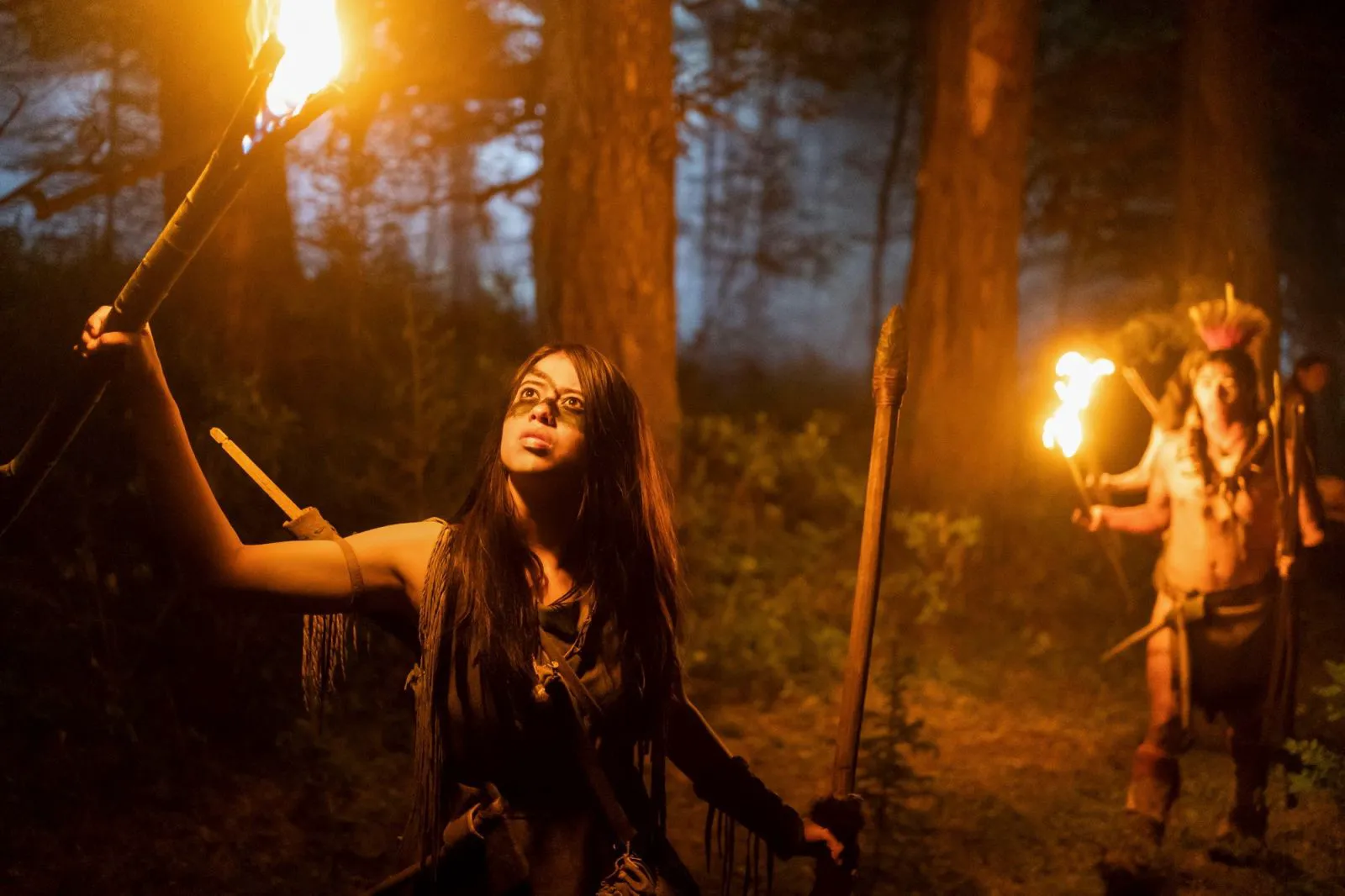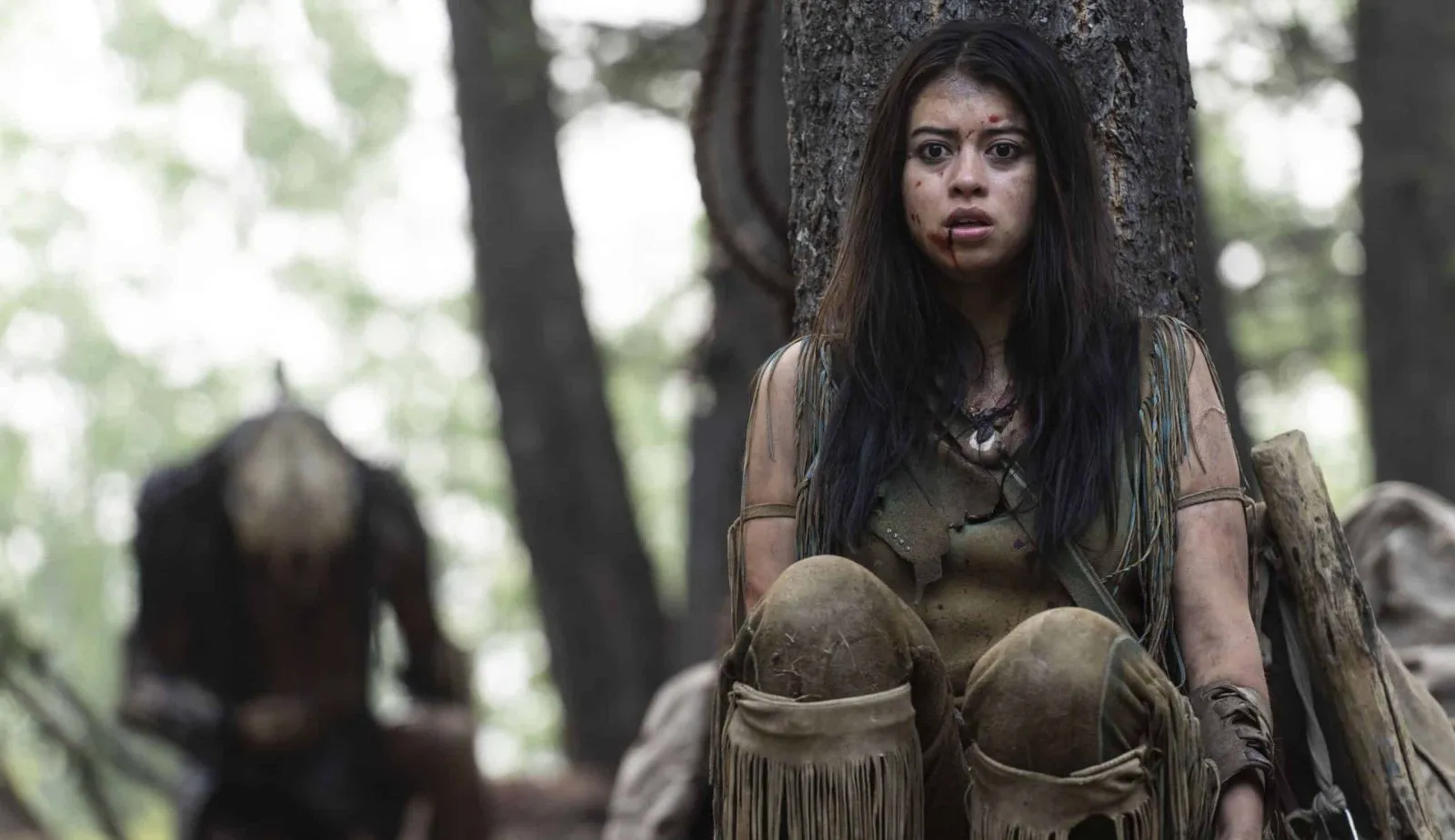In 1719, Naru (Amber Midthunder), a skilled Comanche warrior, yearns to join the hunt alongside her older brother (Dakota Beavers). Her moment arrives when she witnesses a fiery object streaking across the sky. The Predator, an extraterrestrial hunter, lands on native lands and begins its own hunt, targeting everything from wolves and bears to French trappers. Now, Naru must confront the alien to save her own life.

Amber Midthunder as Naru in “Prey”
The Predator’s Enduring Appeal
From the jungles of Guatemala to the concrete jungle of Los Angeles, from Aztec pyramids to secret laboratories, Fox has been milking the Predator franchise for over 30 years, testing its monster in various environments and against new adversaries (including the ill-fated Alien crossover). Despite mixed critical reception and lackluster box office results, the studio remains undeterred, patiently launching sequel after sequel, spin-off after spin-off, or prequel after prequel, all centered around this extraterrestrial race. This time, the franchise delves into the past.
The original screenwriters, the Thomas brothers, had initially envisioned sending the Predator to the battlefields of World War II, uniting American and German soldiers against the alien threat. However, this idea was scrapped and reworked into an urban sequel starring Danny Glover. In 2022, Dan Trachtenberg took an even bolder step, setting the new Predator’s arrival in the exotic landscape of the Great Plains of America, inhabited by the Comanche Indians.

Dane DiLiegro as the Predator in “Prey”
A Fresh Take on the Predator Lore
“Prey” eschews heavy machine guns, hardened mercenaries, the traumatic atmosphere of the Vietnam War, and the trendy masculinity of the 80s. Instead, it relies on Comanche tomahawks, treacherous swamps, and the natural resourcefulness of the indigenous people. Beneath its old-fashioned B-movie veneer, the film feels modern. For example, a woman now proves just as capable of facing the creature as Schwarzenegger, something we never doubted. The visual aesthetic owes much to “The Revenant,” the quintessential survival thriller of our time, with which “Prey” shares many thematic connections.

Amber Midthunder as Naru in “Prey”
However, it’s important to note that Trachtenberg’s prequel doesn’t quite reach the heights of DiCaprio’s harrowing adventure. While “Prey” boasts masterful cinematography, with Jeff Cutter’s meticulous work capturing the beauty of North America (creating landscapes perfect for desktop backgrounds), it doesn’t quite match the sweeping camera work of Lubezki. The film includes a fierce battle with a bear and a recurring theme that humans are the most dangerous monsters (as in “The Revenant,” exemplified by the brutal French colonizers).
Trachtenberg’s team takes a minimalist approach to the historical reconstruction. The Comanche way of life is presented at the level of a basic historical documentary, deemed “good enough.” The film clearly has a limited budget and creative constraints, but its potential shines through in the encounters with the invisible alien, the appearance of forest animals, and the firing of hunting muskets. Primal violence and combat choreography are where Trachtenberg’s project truly excels.
The Food Chain and the Hunt
“Prey” is fascinated by the exploration of the food chain, a strange hierarchy where the hunter quickly becomes the hunted. This metaphor takes on a recursive nature as the story progresses. The Comanche hunters naively believe they rule over the fauna, while the proud snake, triumphant in its battle with a hapless rat, probably thinks the same, until it becomes prey for the arriving humanoid with terrifying mandibles. And so on.

Amber Midthunder as Naru in “Prey”
The authenticity of the natural environment is truly stunning. The pristine landscapes of America, complete with meticulously crafted wigwams, are abundant. The frame overflows with picturesque rivers and a wealth of life, making it all the more regrettable that most of its inhabitants will become trophies for the alien visitor. The dismemberment of a wolf and the victory over a bear are among the Predator’s most impressive on-screen moments. Cruel and unceremonious, it immediately sets the right tone.
And that’s all that’s needed. Since the first “Predator,” we’ve been told about the relationships between organisms, whether grouped together or left alone, in the language of primal instincts and pure physiology. This is a film that doesn’t require intelligence or delicacy – in fact, it might even suffer from it. “Prey” shines in moments of unconditioned reflexes: when a battle ensues and the monster’s slime glistens emerald, when a deafening roar echoes and the heroine’s hunting instincts kick in.
Trachtenberg remains true to the chosen format until the very end – a film as a permanent hunt, where limbs are torn, traps are sprung, and battle trophies are presented. This is why “Prey” is being hailed as the film closest to John McTiernan’s old-school “Predator.” Don’t be fooled by the gender dynamics, the shift away from muscular machismo to a hardened female spirit. This is good old-fashioned carnage, and the filmmakers know the key to reaching the viewer’s heart is through their stomach.